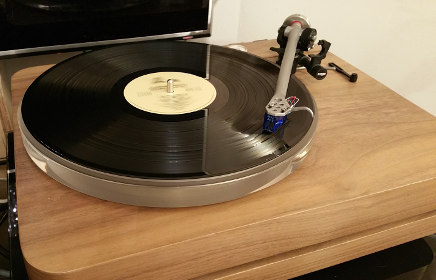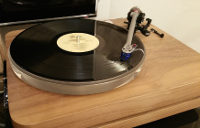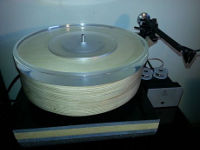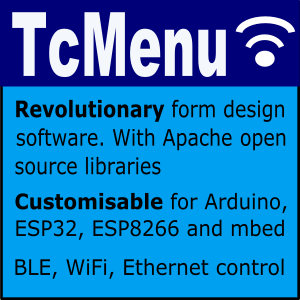In this segment I discuss building source equipment and my love of turntables and woodworking.
HI-FI Collective cable kit 6
Some time ago I built interconnect cable kit #6 from HI-FI Collective. It's been in my system now for some time and has been used in quite a few situations. Firstly, it's been used to connect an Arcam rDAC to my Roksan K2, secondly, it's been used to connect my Cambridge Audio 752BD to my Arcam AVR380 and lastly at the moment it's being used to connect my Project Tubebox IIse phono stage to the Roksan. It should be noted that I am in no way commercially renumerated or linked for this page, I offer the review purely because I think the cable is worthy of consideration.
Orbit, a high performance DIY turntable.
 Orbit is a high performance DIY turntable based on Rega 24V decks. It's very easy to make using a
moderately well stocked home workshop. In my opinion it competes well with decks costing a lot more
than its sum of parts. It uses a fairly conventional design so that it is easy to fit the original
Rega lid back onto it, this is important as a lid protects the fragile stylus when not in use and
prevents dust reaching the deck.
Orbit is a high performance DIY turntable based on Rega 24V decks. It's very easy to make using a
moderately well stocked home workshop. In my opinion it competes well with decks costing a lot more
than its sum of parts. It uses a fairly conventional design so that it is easy to fit the original
Rega lid back onto it, this is important as a lid protects the fragile stylus when not in use and
prevents dust reaching the deck.
What I really like about Rega decks is that they are very easy to upgrade. In fact there is no need to perform all upgrades in one go, one can start with the TT PSU, then the platter and sub-platter and so on. This means a high performing deck can be purchased slowly in steps. In fact my first attempt at building a turntable involved a series of ISOKinetik modifications on a P3/24 turntable.
Things learnt from building the first turntable.
<img class=" titleimg" alt="" src="/images/audio/turntable/tt-complete2.jpg"/>
Although my first turntable prototype worked quite well, it had a few issues, each of these is looked at here:
- The area under the platter was too thin, and tended to concentrate vibration around the platter main bearing sleeve. This was fixed by brute force to avoid vibration in the first place (a very large granite / MDF block below the plinth).
- The positioning of the motor and circuit led to some noise, and only earthing to motor prevented it.
- It left the stylus too exposed, and because of its design could not easily be covered with a lid. This turned out to be the biggest weak point! While trying to clean under the turntable I caught the duster on the stylus. This led to the demise of an Ortofon 2M black stylus; which at £300 led me to rethink the design.
So in summary:
Turntable building - the history
<img class=" titleimg" alt="original TT" src="/images/audio/turntable/tt-complete1.jpg"/>
Before my most recent turntable build, I had tried a couple of earlier designs. The first of which was a Rega deck with a couple of IsoKinetik modifications. I've gone a long long way since this, but I keep it here for historic purposes.
Starting out with a P3-24 deck.
My deck started life as a refurbished P3-24 unit, with no mods made to it. Firstly, after much reading I purchased the TT motor control unit; which is available from many retailers at reasonable cost. It should be said that this is one of the easiest and most effective upgrades that you can me, and I would not do any other jobs without first using the TT motor control unit.




